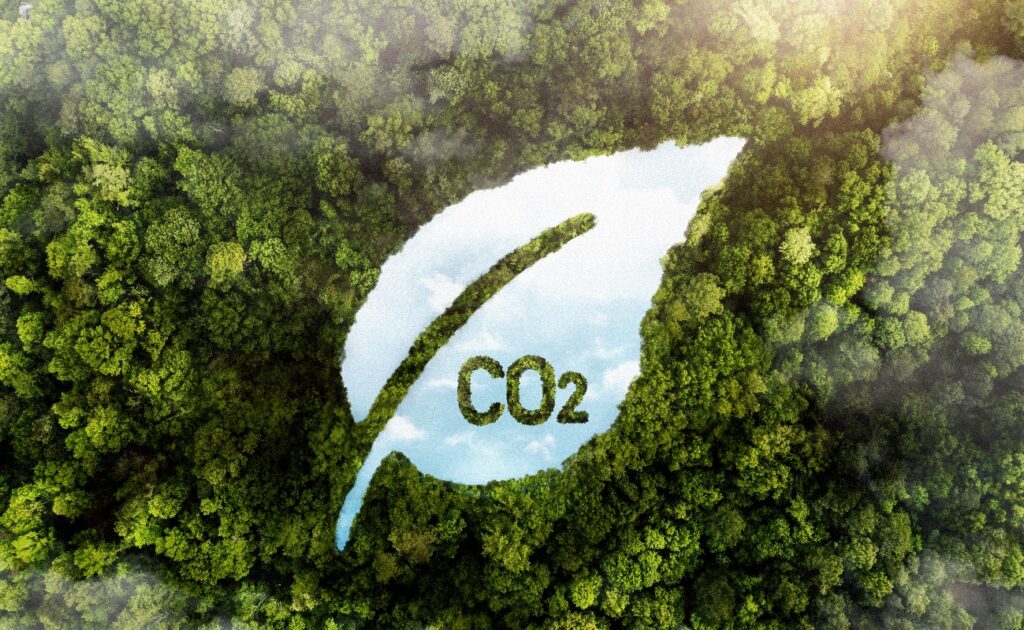Emission of large amounts of CO2 into the atmosphere results in increasing global temperatures and greenhouse effect. Source of the majority anthropogenic CO2 emissions consists of energy and heating, and industry contributes in 30% of emissions by technological processes such as cement plastic or steel production.
The advancement in clean energy technologies, such as renewable, has contributed to the reduction of additional CO2 emissions by 550 million tons, while industrial process emissions decreased by 102 Mt. In contrast, there was a 423 Mt rise in emissions generated by fuel combustion.
CCUS (Carbon Capture Utilization and Storage) is considered one of eight technologies whose scalability will enable the targets. The project accelerates obtaining permits and increases CO2 injection capacity at least to 50 Mt of carbon dioxide by 2030, notably by oil and gas producers located in the European Union. Globally, there are currently 40 commercial facilities of CCUS in operation, obtaining in total 45 Mt of CO2 per year.
The European Commission has implemented the Net Zero Industry Act which aims to generate at least 40% of energy using clean energy technologies by 2030

Carbon dioxide utilization
CO2 from CO2 capture technology serves as a universal resource for chemical processes, offering production of value-added chemicals.
However, if storing CO2 underground proves to be more cost-effective solution, it can be isolated in geological formations, contributing to greenhouse gas emissions.
One of the various solutions is CO2 injection into natural gas or oil fields. It is the procedure applied for Enhanced Oil/Gas Recovery (EOR, EGR) and causes increase of pressure in the reservoir. Raises gas or oil extraction and reduces the negative environmental impact of the fossil fuel industry. Thanks to the EGR and EOR technology, about 20 million metric tons of gas may be stored under the ground, which was crucial in mitigating CO2 emissions.
CO2 is used to manufacture the following chemicals:
Urea production involves captured CO2 from industrial processes with ammonia, then are converted into final product through series of reactions in high-pressure reactor. Urea is widely used to fertilizers production or urea resins, which found applications as adhesives due to their insulation and impregnation properties.
Methanol synthesis with CO2 and H2 as reaction substrates is used in commercial plants in lower scale. It results in CO2 utilization and forms valuable product through sustainable process such as fuel or raw material for plastic production or other chemicals.
Cyclic carbonates synthesis includes reaction of epoxides with CO2 and are used as electrolytes in batteries, solvents or semi-products in some polymer synthesis.
Salicylic acid synthesis is the reaction of sodium phenoxide with CO2, where the final product can be converted into acetylsalicylic acid, an active ingredient commonly known as Aspirin. Chemical is also utilized as a precursor or substrate for dyes production.
Inorganic carbonates used for minerals and construction materials production, through silicates and mineral oxides reactions with captured CO2. The emerging technique of mineralizing CO2 with calcium compounds attention to produce calcium carbonate is gaining attention and can be used in various applications (building materials, paper and glass production, metallurgy). Besides reducing the amount of CO2 in the air, it also locates the CO2 in a solid, usable form.
Polymers production is currently in demonstration phase, where CO2 could be consumed in two different ways: directly incorporated into a polymer chain or as monomer or used in earlier stages of monomer production. The research on CO2 based polymers is ongoing and materials may offer improved properties. CO2 utilization through plastic synthesis is more eco-friendly solution than conventional solutions based on fossil fuels.
Synthetic fuels such as synthetic diesel, synthetic gasoline, kerosene, methane and methanol production could be made from carbon-captured CO2. First, hydrogen is generated by water electrolysis, and combined with captured CO2, producing syngas either by reverse water gas shift reaction (RWGS) or the Fisher-Tropsch process. In subsequent stages, syngas becomes a precursor for synthesis fuel generation.